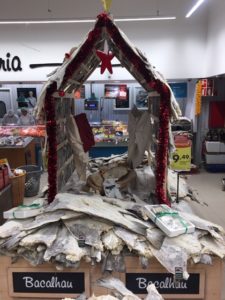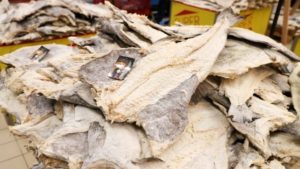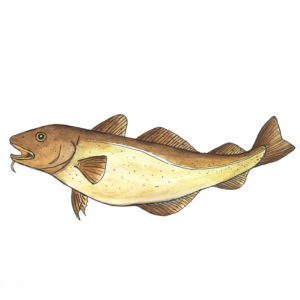 In Portugal – where palliative care is no priority – a first training course of end-of-life doulas has started last September.
In Portugal – where palliative care is no priority – a first training course of end-of-life doulas has started last September.
The program covers topics like active listening, symptoms of chronic ailments, nutrition and hydration, post-mortem care and legacy work.
An end-of-life doula is a professional, who guides the dying and opens up the conversation about death and loss. Topics that are often taboo for the dying and their family. Doulas promote family-led, home-based care and their role can supplement and go beyond hospice care. No easy task in a society that tends to react to sadness with a prescription of antidepressants.
 The term doula originates from ancient Greece meaning a helping individual; a servant or in extreme cases, a slave. Since the 1960s the term is in use for women who support pregnant mothers during childbirth. Unlike midwives, they do not serve in a medical capacity.
The term doula originates from ancient Greece meaning a helping individual; a servant or in extreme cases, a slave. Since the 1960s the term is in use for women who support pregnant mothers during childbirth. Unlike midwives, they do not serve in a medical capacity.
The primary role of the end-of-life doulas is not only to provide emotional, physical and psychological support but also to educate and empower families to exercise their right to care for the dead.
Their work is relatively common in the USA (www.inelda.org), Canada and Brazil and although they are not required to have medical training, many come from the healthcare field.
What happens if the family wants to continue curative care but the patient not?
 ‘It will be up to the doula to act as an intermediary between the needs of each other, to try to harmonize conflicts’, explains nurse Ana Infante, a palliative care nurse and organizer of the course. ‘There are signs and symptoms that are part of the end-of-life process. It is important to know how to recognize them and reassure the family, identifying those that may be causing the dying person discomfort.’
‘It will be up to the doula to act as an intermediary between the needs of each other, to try to harmonize conflicts’, explains nurse Ana Infante, a palliative care nurse and organizer of the course. ‘There are signs and symptoms that are part of the end-of-life process. It is important to know how to recognize them and reassure the family, identifying those that may be causing the dying person discomfort.’
 The work of doulas doesn’t replace that of health professionals and has nothing to do with euthanasia. Doulas do not delay or advance the process of dying: they merely accompany people. This work can be done at home or in hospital as long as the surrounding environment is comfortable, safe and peaceful for the patient.
The work of doulas doesn’t replace that of health professionals and has nothing to do with euthanasia. Doulas do not delay or advance the process of dying: they merely accompany people. This work can be done at home or in hospital as long as the surrounding environment is comfortable, safe and peaceful for the patient.
Aproveite o seu dia Enjoy your day

 What began in a country with a large following Christianity as an alternative food to the Church’s fasting of meat during Lent, later became associated with Christmas. The traditional meal is called Consoada. It consists of boiled salt-dried codfish – soaked for 2 or 3 days to remove most of the salt – boiled potatoes, boiled eggs, boiled chickpeas, and boiled cabbage accompanied with a dressing of chopped raw onion, garlic, parsley, and lots of olive oil!
What began in a country with a large following Christianity as an alternative food to the Church’s fasting of meat during Lent, later became associated with Christmas. The traditional meal is called Consoada. It consists of boiled salt-dried codfish – soaked for 2 or 3 days to remove most of the salt – boiled potatoes, boiled eggs, boiled chickpeas, and boiled cabbage accompanied with a dressing of chopped raw onion, garlic, parsley, and lots of olive oil! Cod (bacalhau) is the nation’s favourite dish. According to the locals, there are 365 different ways to prepare it. Well-known
Cod (bacalhau) is the nation’s favourite dish. According to the locals, there are 365 different ways to prepare it. Well-known  The fish isn’t native to Portuguese waters. The Vikings – who used to take air-dried cod on their sea voyages – probably introduced bacalhau in Portugal. To preserve it longer, the Basques went a step further by salting the fish before drying.
The fish isn’t native to Portuguese waters. The Vikings – who used to take air-dried cod on their sea voyages – probably introduced bacalhau in Portugal. To preserve it longer, the Basques went a step further by salting the fish before drying. Traditional fishing far away from home was easier said than done. Each fisherman was assigned a dory – a small flat-bottomed fishing boat – which was lowered from the mothership into the ice-cold waters once they reached the banks of Newfoundland. The fisherman then ventured all alone into the foggy sea and was left to his own till his boat was filled the day’s catch. The documentary
Traditional fishing far away from home was easier said than done. Each fisherman was assigned a dory – a small flat-bottomed fishing boat – which was lowered from the mothership into the ice-cold waters once they reached the banks of Newfoundland. The fisherman then ventured all alone into the foggy sea and was left to his own till his boat was filled the day’s catch. The documentary